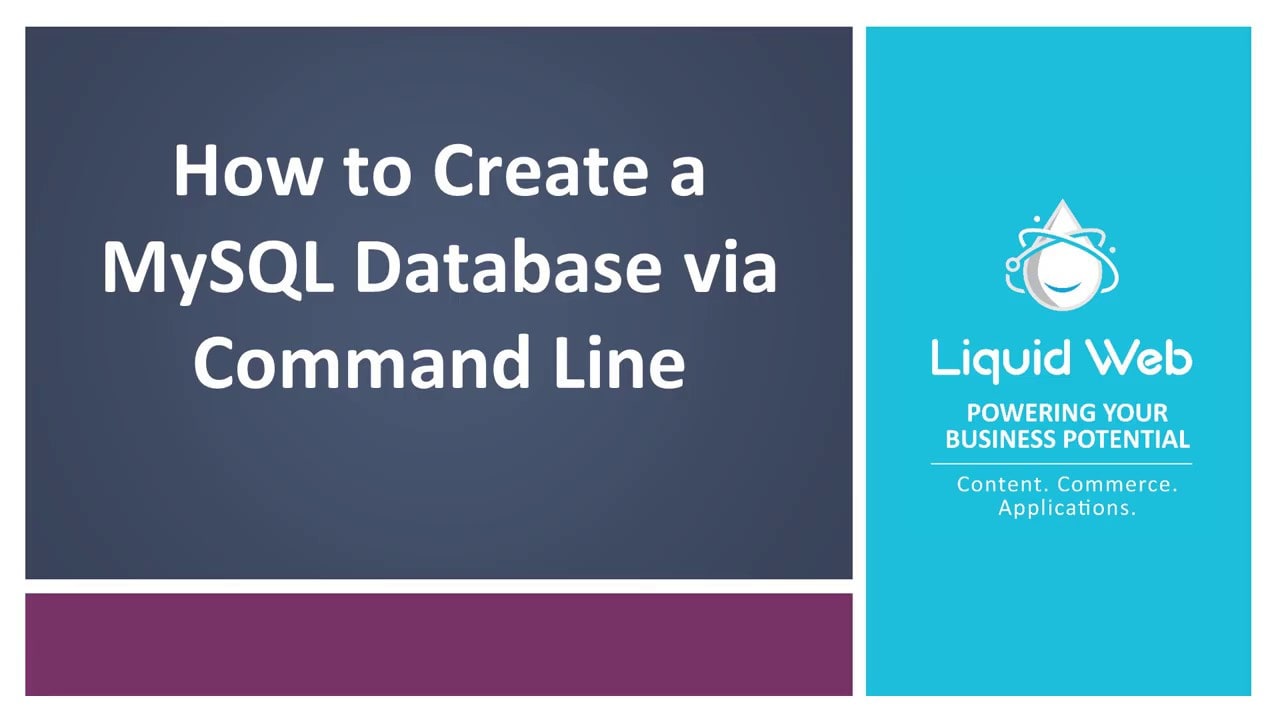Tag: Command-line
How To Install Git on Ubuntu 12.04
Git is an open source, distributed version control system (VCS). It’s commonly used for source code management (SCM), with sites like GitHub offering a social coding experience, and popular projects such as Perl, Ruby on Rails, and the Linux kernel using it.
How to Install Git on CentOS 6
Git is an open source, distributed version control system (VCS). It’s commonly used for source code management (SCM), with sites like GitHub offering a social coding experience, and popular projects such as Perl, Ruby on Rails, and the Linux kernel using it.
Remove a MySQL User on Linux via Command Line
MySQL via Command Line 101: Basic Database Interaction
- These instructions are intended for removing a MySQL user on Linux via the command line
- I’ll be working from a Liquid Web Core Managed CentOS 6.5 server, and I'll be logged in as root.

First we'll log in to the MySQL server from the command line with the following command:
Remove Permissions for a MySQL User on Linux via Command Line
MySQL via Command Line 101: Basic Database Interaction

- These instructions are intended for revoking a MySQL user permissions on Linux via the command line
- I’ll be working from a Liquid Web Core Managed CentOS 6.5 server, and I'll be logged in as root.
First we'll log in to the MySQL server from the command line with the following command:
Create a MySQL Database on Linux via Command Line
Preflight Check
- These instructions are intended for creating a MySQL database on Linux via the command line.
- I’ll be working from a Liquid Web Core Managed CentOS 7 VPS server, and I'll be logged in as root.
Create a MySQL Database

First we'll log in to the MySQL server from the command line with the following command:
Change a Password for MySQL on Linux via Command Line
MySQL via Command Line 102: Basic User Interaction
- These instructions are intended for setting the password for all MySQL users named root on Linux via the command line. However, they can also be followed to change the password for any MySQL user.
- I’ll be working from a Liquid Web Core Managed CentOS 6.5 server, and I'll be logged in as root.

First, we'll log in to the MySQL server from the command line with the following command:
If you run a cPanel server, and need to upgrade your Apache or PHP version, cPanel provides the Easyapache tool to make these updates a breeze. While it can be run from WHM, it is generally preferred to run it from the command line.
Say your PHP application is unable to load a needed PHP module. The first thing to check is to see if the PHP module is available to the application. The best way to do that is with what is called a “phpinfo” file.
If you are used to administering Apache on a cPanel server, administering the faster Litespeed webserver is not that much different. Litespeed transparently takes over for Apache; any configuration changes that you would normally make in an Apache configuration file or .htaccess files is still made in those files. In fact, once Litespeed is installed you can administer your cPanel server like you normally would. The few changes you would want to make to Litespeed directly can be done through your server’s Web Host Manager (WHM).
In a vast majority of cases, Linux does a fantastic job of automatically scheduling processes. The more urgent processes are given a higher priority, and the less urgent processes a lower priority. In rare circumstances, the scheduler might not prioritize processes as you would like. For example, backup processes could be taking up resources that you would rather be used serving web pages. If you would like to regain a bit control over process priorities, the nice and renice commands will give you some.
Our Sales and Support teams are available 24 hours by phone or e-mail to assist.

